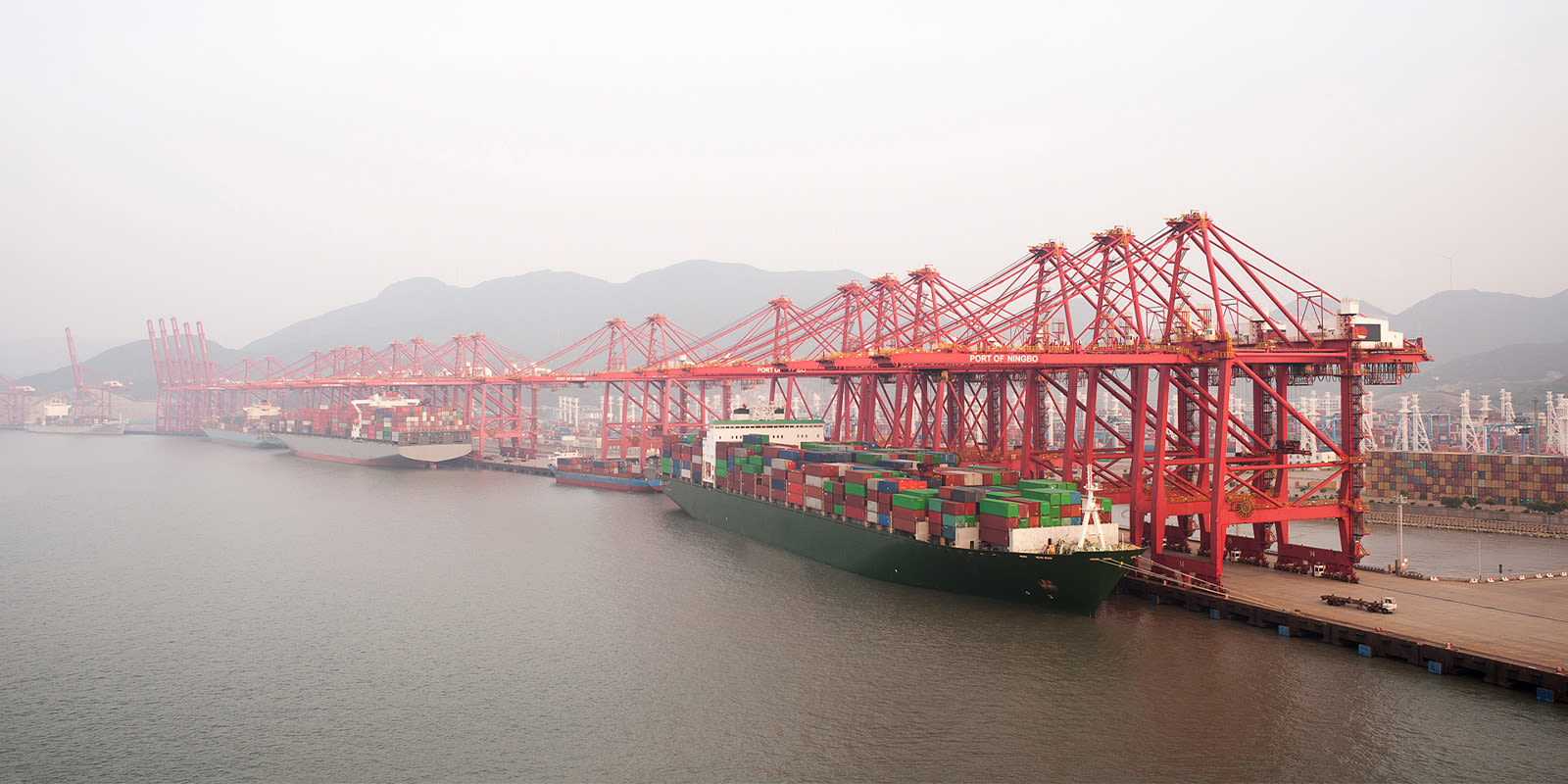
2020 年 03 月 16 日
Coronavirus Update: How to Jump Start Your Supply Chain
Tags:
Coronavirus Update: How to Jump Start Your Supply Chain

With the spread of COVID-19 rapidly changing lives and livelihoods, we all want to know: what’s next? When will factories start running again? And how can you ensure your cargo is moving when they do? Flexport’s leaders in ocean and air freight, trucking, and warehousing across the US, Europe and Asia recently held a webinar on how to deal with ongoing capacity constraints, increasing shipping costs, departure and arrival bottlenecks, and more.
Below are major takeaways from their conversation updated to reflect new information.
Far More than a Chinese New Year Slump
Typically, Chinese New Year (CNY) causes a temporary and manageable disruption to global trade. Peak season predictably precedes the 1-2 weeks before CNY when over 50% of the country travels home and factories are closed. Usually after around 3-4 weeks manufacturing levels return to normal again. It is a well known pattern that companies have adapted to.
However, this year has been out of the ordinary and COVID-19 has unleashed very different market dynamics.
Expert View: COVID-19 Impact by Modes
TRUCKING
In the first week of March 2020 the trucking market recovered to 80%, making it a relatively bright spot. If the trend continues, trucking will reach 90% market recovery starting the week of March 9 and see full recovery by the week of March 16.
AIR
Most freight travels in the bellies of passenger planes, and those flights will resume, but not quickly.
In the week after February 24, the China-US air freight market jumped more than 50% — followed by a further 50% increase the week of March 2. The underlying cause is the cancellation of passenger flights, which carry 40-50% of air freight capacity from China to the US. The backlog of volume, reduction in supply from airlines, rates doubling in a short period of time, and space disappearing overnight all make for a difficult situation. Passenger flight capacity is determined by the demand of passengers, which hinges on how the virus spreads internationally, and is thus hard to predict.
OCEAN
Asia to US (TPEB) trade lanes have been heavily impacted by a lack of demand. US ports are announcing early gate closures to balance out supply and demand. The close of the traditional TPEB contract season on May 1 may be an inflection point, but it’s too soon to tell.
Turning to Asia to Europe (FEWB) trade lanes, 75 blank sailings have been announced for the period of early February to early April 2020 with COVID-19 listed as the cause of 29 (or 38.6%) of those. This was placed on top of an already significant blank sailing program.
Even so, China has begun to recover. This positive trend has started in North China, followed by South China, and finally East/Central China, the region most affected by the Coronavirus. Large companies have mostly reopened, but SMEs are returning to work at a slower pace (approximately 80% for North China and 50-60% for South China and East/Central China).
Full recovery will of course depend on levels of global demand. Many had hoped that shipments would run at full capacity by the end of March to early April. But as the full effects of COVID-19 on the economies of North America, Europe, and other regions are still unknown, it’s unclear when this will happen.
Audience View: Anticipated Supply Recovery
During the webinar Flexport polled our audience on the following questions and learned that most were optimistic the supply side would recover early. The majority reported that factories were mostly operational and expected them to return to full capacity in 2-4 weeks. A large majority said their primary method of shipping would remain standard ocean freight.
Surveys of Shippers in the Webinar
At what percentage of capacity are the factories you’re using operating today?
- 2.7% of shippers indicated operating capacity < 10%
- 15% indicated operating capacity of 10-40%
- 39.9% indicated operating capacity of 40-60%
- 42.4% indicated operating capacity > 60%
When do you expect your factory to be at full capacity?
- 14.2% expect full capacity in less than 2 weeks
- 51.6% expect full capacity in 2 to 4 weeks
- 30.8% expect full capacity in 4 to 8 weeks
- 3.5% expect full capacity in more than 8 weeks
What will be your primary method of moving cargo once it exits the factory?
- 11.5% said their primary method would be standard air freight
- 3.3% said their primary method would be express air freight
- 74.8% said their primary method would be standard ocean freight
- 10.4% said their primary method would be expedited ocean freight
Strategies to Handle COVID-19
Across modes:
- Communication will be key!
- Stay in regular contact with your logistics provider to develop flexible solutions, limit mistakes, and mitigate miscommunications.
- Understand how your logistics providers plan to fulfill their obligations and hold their vendors accountable.
- Consider shipping by rail or air for semi-urgent shipments.
Trucking:
- Allow for a 2-3 day buffer for freight schedule changes (equivalent to blank sailings).
- Make sure your shippers ask their truckers to prepare all necessary passing licenses. Pay special attention to the exact location of pick ups.
- Consider barge shipments in areas close to Shenzhen and Shanghai where there are lots of water connections into the cities. Barge shipping will become the best option if there are burdensome roadblocks/checkpoints on the roads.
- Most barges offer around 100 TEUs of capacity and can easily connect with the mother vessel.
Air:
- Cargo space on passenger flights will resume, but not quickly. Key carriers’ most optimistic estimate is the end of April or mid-May.
- Be open-minded and flexible with alternative choices:
- Look to inland, regional airports. Unexpected locations may be better able to accommodate air cargo.
- Split shipments; something is better than nothing.
Ocean:
- Look to premium options based on dynamic pricing to guarantee space. This approach is good for hot shipments.
- Sea-Air Option: Integration of two different transportation modes by using ocean freight initially to connect to an air hub and then continue as air freight. This could be suitable for semi-urgent shipments.
- Expedite ocean shipments from China to the US with a transload solution:
- Ocean to US domestic trucking allows shipments to get into the mainland quicker, avoiding congestion.
- If/when the market picks up, the US market infrastructure will be under stress. Consider port congestion, and what the expectations are around delivery dates.
- If negotiating contracts, aim to reduce uncertainty and focus on the negotiation before rates expire to ensure no disruptions within commercial issues and space allocations.
- Generally speaking, we expect contracts to be concluded during the season.
Flexport.org:
- Flexport.org has partnered with Airlink and Project C.U.R.E., and is providing consultation to nonprofits and managing shipments containing relief items.
- 353K masks, medical gloves, and goggles have been delivered so far.
- Support the relief effort by contributing to the Flexport.org Fund.
Conclusion
China shut down much travel and many events and economic activities to slow the spread of COVID-19. Lowered demand also dampened economic activity. Now much of the rest of the world is going through a similar experience whose outcomes for societies, economies, and supply chains are not yet fully understood. But we are not completely in the dark. The more useful information we all share, the more light we can shed on the best courses of action for our businesses and our communities. That is the spirit in which these results are shared.
To learn more about how you can jump start your supply chain, listen to the full webinar here.
About the Author



